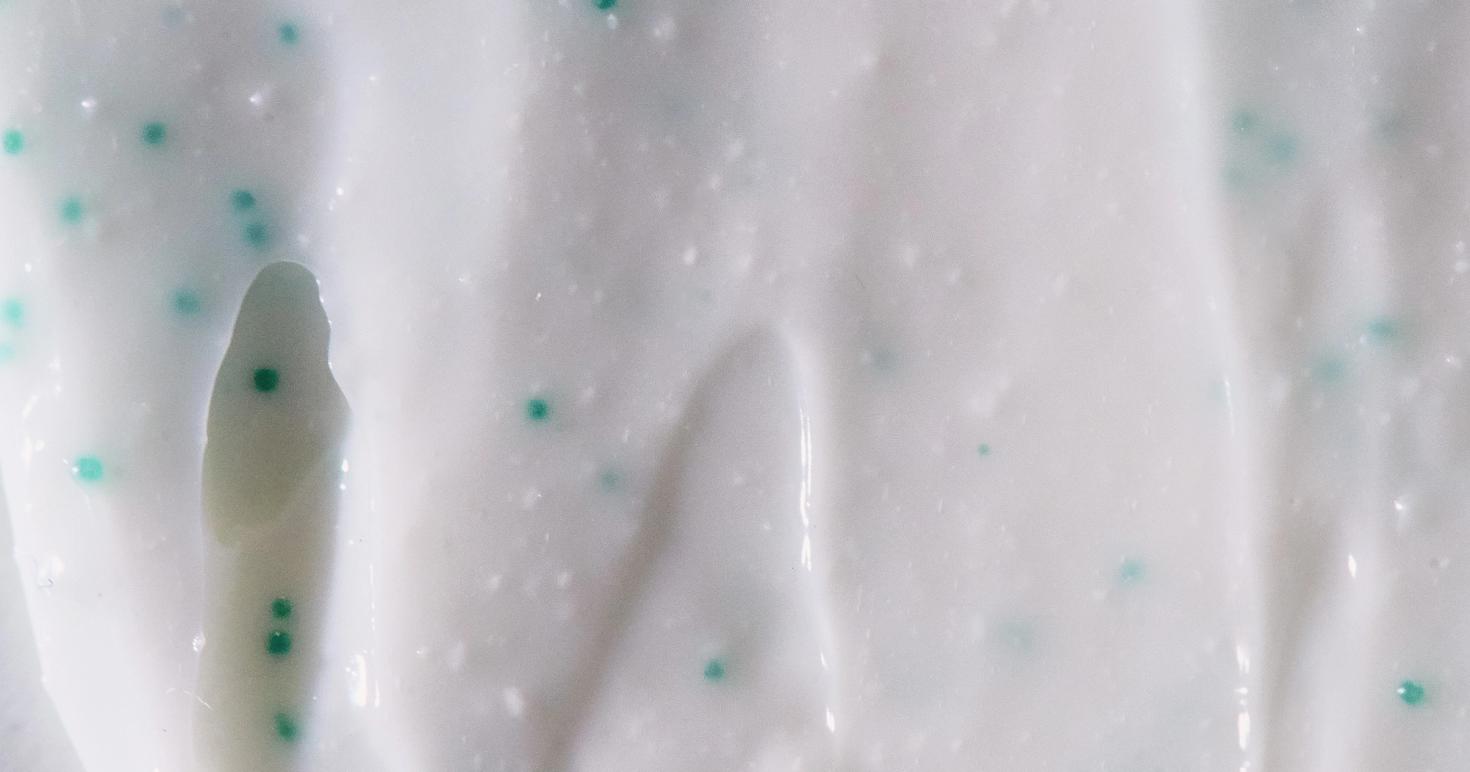Achieving smooth skin and shrinking those pesky pores, particularly on the nose, requires more than just wishful thinking—it demands understanding, commitment, and a well-informed skincare approach.
This article is your comprehensive guide to understanding pores, offering valuable insights to elevate your skincare routine and achieve a flawless complexion. We will delve into the causes of pores, the mysteries of pore size, and explore Comfort Zone’s science-backed strategies for shrinking pores, especially those on the nose.
"One important consideration with exfoliation is making sure not to irritate or dry out the skin, which can exacerbate oil production. A product with a low percentage of lactic acid or gluconolactone can be a great option as they are gentle exfoliants, which helps keep pores from getting clogged and provides hydration to the skin."
Christine Lee - Comfort Zone Master Educator
Understanding Pore Size
Pores, the tiny openings on the surface of your skin, play an essential role in maintaining your skin’s natural balance and helping it breathe. Here are some key factors that can cause pores to become more noticeable:
- Genetics: Whether you prefer it or not, pore size is genetic. Those who have inherited oily skin are more likely to have larger pores. Although you cannot get rid of genetics, there are ways to efficiently manage them.
- Age: As you age, your skin loses elasticity, causing it to sag and make pores appear larger. Collagen loss can also contribute to enlarged pores, as the skin's support structure weakens over time.
- Sun Damage: Prolonged exposure to the sun’s UV rays can lead to loss of elastin in the skin, therefore stretching the pore opening.
- Environmental Factors: Factors like sun exposure, hydration, temperature, and humidity can affect the size of pores.
- Improper Skincare: Using harsh skincare products, especially those containing irritating ingredients, can lead to clogged pores, causing them to appear larger.
- Hormones: A change in hormone levels can result in more noticeable pores. Women may notice larger pores during pregnancy, menopause, and menstruation.
- Skin Type: Those with naturally oily skin tend to have larger pores because of the excess oil produced. Dry skin can also accentuate the appearance of pores, as the lack of moisture can lead to a rougher skin texture. And finally, combination skin, with its mix of oily and dry areas, can lead to varied pore sizes.
- Lifestyle Choices: Choices surrounding your stress, diet, and skincare routine may all play a factor in pore size.
Pores come in various types and sizes and are often more noticeable in areas of the face such as the nose, cheeks, and forehead. These include:
Clogged Pores
Clogged pores are a common skincare concern that can impact the skin negatively. When pores become blocked by dead skin cells, excess oil, or dirt, the skin is more prone to acne breakouts. If clogged pores persist, the pores may appear larger and more noticeable over time.
Larger Pores
Larger pores are another common skin concern that can affect individuals of all ages and skin types. While genetics play a key role in determining pore size, other factors such as sun exposure, aging, and excess sebum production can also contribute to larger pores. It is most common to notice larger pores in the “T-Zone” (the chin, nose, and forehead) of the face.
Open Pores
All pores on the skin are open. However, the term “open pores” refers to pores that have become larger or more noticeable over time. They are also often called "open comedones" or blackheads and are a common skin concern that can lead to frustration and self-consciousness.
Effective Skincare Routine to Minimize Enlarged Pores
Pores might be a natural part of your skin's landscape, but you can help them appear smaller and less noticeable by following a step-by-step targeted skincare routine. Remember, consistency is key when it comes to skincare. Results won't be instantaneous, but with dedication, you'll likely notice improvements over time.
- Step 1 Gentle Cleansing: An effective skincare routine always begins with a clean face. Start using a gentle cleanser to remove excess oil, makeup, dirt, or other impurities.
- Step 2 Exfoliation: Exfoliating from time to time is essential if you want your products to absorb better. It is important to not over-exfoliate or use harsh products, as this can irritate the skin and worsen pore concerns.
- Step 3 Toner: After cleansing your face, We recommend using a toner to remove any last traces of dirt, makeup, or impurities that may be stuck in your pores. Opt for a toner that is targeted for pores and will leave your skin looking more radiant and healthy.
- Step 4 Serum: Serums are able to effectively penetrate the skin to deliver active ingredients, making them excellent for targeting specific skin concerns. To help reduce the size of enlarged pores, look for serums with vitamin C.
- Step 5 Lightweight Moisturizer: Applying a moisturizer will help keep the skin hydrated and lock in the benefits from previously applied serums. Opt for a moisturizer that is lightweight and will absorb quickly into the skin.
- Step 6 Sun Protection: Protecting your skin from the sun is essential to avoid premature aging, sunspots, and other sun damage. Using sunscreen as part of your everyday skincare routine will help promote healthier, more radiant skin.
- Step 7 Makeup Considerations: There are makeup options to consider that will help minimize the appearance of pores. Look for products that are non-comedogenic, as these are less likely to clog pores. Choose a primer to create the effect of a smoother surface and then layer with a thin, matte foundation.
Exfoliation Techniques
Incorporating the right exfoliation technique into your skincare routine can significantly help combat enlarged pores and contribute to a smoother, radiant complexion. These include:
- Chemical Exfoliation: Chemical exfoliation involves the use of acids to remove dead skin cells from the surface of your skin. Chemical exfoliation has the capacity to penetrate more deeply beneath the skin, resulting in improved skin texture and unclogged pores. With chemical exfoliants, it is important to start with a lower concentration and gradually increase as the skin adapts to it.
- AHAs: Alpha hydroxy acids include naturally occurring acids like lactic or glycolic. AHAs are known to brighten the complexion, promote collagen production, and prevent acne breakouts and clogged pores.
- BHAs: Beta hydroxy acids are oil-soluble, making them excellent for penetrating pores and exfoliating deep within. Salicylic acid is the most common BHA and is often used for treating acne and maintaining clear pores.
- Physical Exfoliation: Physical exfoliation requires manually removing the build-up of dead skin cells with the use of a textured product or tool.
- Exfoliating Scrubs: Exfoliating scrubs consist of granules to remove dirt and oil, and clean your pores. Gently massage an exfoliating scrub in circular motions, but be careful not to rub aggressively as this can cause irritation.
- Exfoliating Brushes or Tools: Exfoliating brushes are typically electronic and are used to enhance the effectiveness of cleansers. They use bristles or silicone pads to clean the skin and pores by gently scrubbing in a circular motion to remove dirt, makeup, and dead skin.


In order to maintain ideal skin health and maximize the effectiveness of the elimination of enlarged pores, it is crucial to choose the right technique for your skin type. The choice between chemical and physical exfoliation will be dependent upon your concerns and preferences.
Pore-Tightening Ingredients to Look For
When it comes to eliminating enlarged pores, there are certain ingredients you will want to look for. These ingredients work beneath the surface, addressing the factors that contribute to enlarged pores and help you achieve your skin goals. When selecting products to incorporate into your skincare routine to target pores, look for the following:
- Niacinamide is an active ingredient used to visibly minimize pores, improve uneven skin tone, and brighten the skin.
- Salicylic Acid is a BHA that penetrates the pores and exfoliates the skin to minimize the appearance of enlarged pores.
- Retinoids promote a younger complexion by increasing cell turnover. This can reduce the visibility of pores and keep the skin tighter and smoother.
- Witch Hazel: Packed with anti-inflammatory properties, Witch Hazel helps to remove excess oil and debris from the skin, resulting in the shrinking of the pores.
- Peptides are amino acids that support collagen production, improving skin elasticity and firmness.
- Hyaluronic Acid: This hydrating ingredient is known to plump and moisturize the skin, which makes the pores appear smaller due to skin fullness.


Professional Treatments for Pores
Professional treatments, administered by trained dermatologists or skincare professionals, can offer targeted and often quicker results. Some of the most common pore-tightening treatments done by professionals include:
- Chemical Peels: Chemical peels are chemical solutions applied directly to the skin, which then exfoliate and remove the surface layer. By promoting cell turnover and reducing oil production, chemical peels can improve pore size. This procedure ranges in intensity and multiple sessions may be required based on your skin’s needs. The skin is often very sensitive after treatment and may require multiple days of downtime.
- Microdermabrasion: Microdermabrasion is a non-invasive treatment that renews the overall skin tone and texture using a small device that removes the outer layer of skin. As the oil and bacteria are removed, the pores appear smaller and the skin has a more youthful glow. Microdermabrasion is considered safe for all skin types and treatment is usually painless. Two to four sessions are typically needed before results are seen.
- Laser Therapy: Laser treatment is effective at reducing pore size by using laser energy to heat and stimulate collagen production beneath the skin’s surface, resulting in tighter, rejuvenated skin. For optimal pore reduction, multiple sessions may be required.


